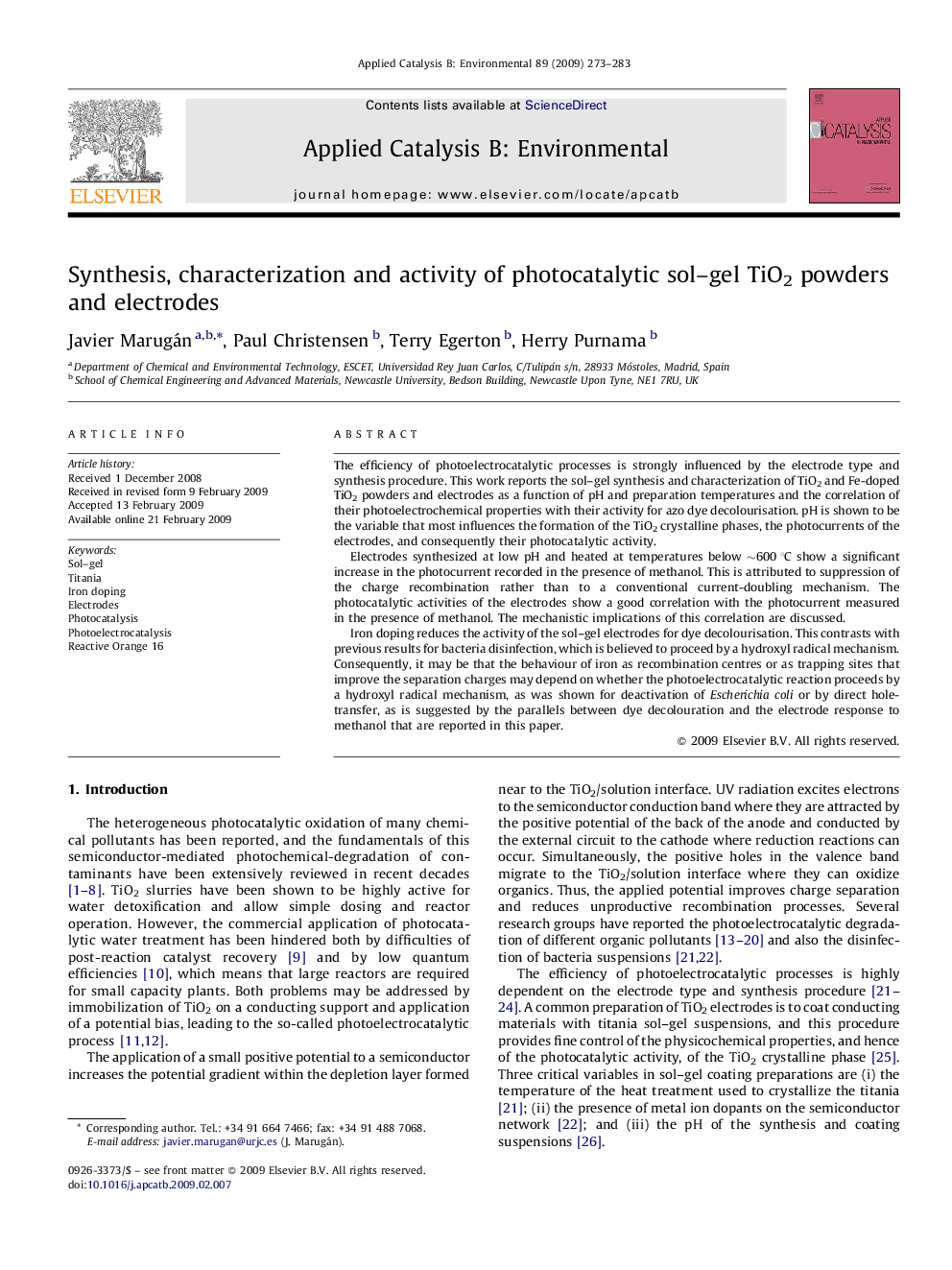| Article ID | Journal | Published Year | Pages | File Type |
|---|---|---|---|---|
| 47860 | Applied Catalysis B: Environmental | 2009 | 11 Pages |
The efficiency of photoelectrocatalytic processes is strongly influenced by the electrode type and synthesis procedure. This work reports the sol–gel synthesis and characterization of TiO2 and Fe-doped TiO2 powders and electrodes as a function of pH and preparation temperatures and the correlation of their photoelectrochemical properties with their activity for azo dye decolourisation. pH is shown to be the variable that most influences the formation of the TiO2 crystalline phases, the photocurrents of the electrodes, and consequently their photocatalytic activity.Electrodes synthesized at low pH and heated at temperatures below ∼600 °C show a significant increase in the photocurrent recorded in the presence of methanol. This is attributed to suppression of the charge recombination rather than to a conventional current-doubling mechanism. The photocatalytic activities of the electrodes show a good correlation with the photocurrent measured in the presence of methanol. The mechanistic implications of this correlation are discussed.Iron doping reduces the activity of the sol–gel electrodes for dye decolourisation. This contrasts with previous results for bacteria disinfection, which is believed to proceed by a hydroxyl radical mechanism. Consequently, it may be that the behaviour of iron as recombination centres or as trapping sites that improve the separation charges may depend on whether the photoelectrocatalytic reaction proceeds by a hydroxyl radical mechanism, as was shown for deactivation of Escherichia coli or by direct hole-transfer, as is suggested by the parallels between dye decolouration and the electrode response to methanol that are reported in this paper.
